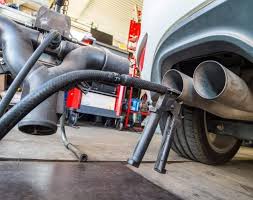An international team of researchers has uncovered the mechanism that allowed Volkswagen to circumvent U.S. and European emission tests over at least six years before the Environmental Protection Agency put the company on notice in 2015 for violating the Clean Air Act. During a year-long investigation, researchers found code that allowed a car's onboard computer to determine that the vehicle was undergoing an emissions test. The computer then activated the car's emission-curbing systems, reducing the amount of pollutants emitted. Once the computer determined that the test was over, these systems were deactivated.
When the emissions curbing system wasn't running, cars emitted up to 40 times the amount of nitrogen oxides allowed under EPA regulations.
The team, led by Kirill Levchenko, a computer scientist at the University of California San Diego will present their findings at the 38th IEEE Symposium on Security and Privacy in the San Francisco Bay Area on May 22 to 24, 2017.
"We were able to find the smoking gun," Levchenko said. "We found the system and how it was used."
Computer scientists obtained copies of the code running on Volkswagen onboard computers from the company's own maintenance website and from forums run by car enthusiasts. The code was running on a wide range of models, including the Jetta, Golf and Passat, as well as Audi's A and Q series.
During emissions standards tests, cars are placed on a chassis equipped with a dynamometer, which measures the power output of the engine. The vehicle follows a precisely defined speed profile that tries to mimic real driving on an urban route with frequent stops. The conditions of the test are both standardized and public. This essentially makes it possible for manufacturers to intentionally alter the behavior of their vehicles during the test cycle. The code found in Volkswagen vehicles checks for a number of conditions associated with a driving test, such as distance, speed and even the position of the wheel. If the conditions are met, the code directs the onboard computer to activate emissions curbing mechanism when those conditions were met.
